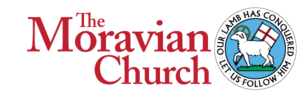From February 7 to 9, nearly 50 members of the clergy from the Diocese of Edmonton gathered for a clergy conference, which had been held annually prior to the COVID-19 pandemic. In fact, the last such gathering of clergy happened more than three years ago, in January 2020.
The opportunity to reconnect at Providence Renewal Centre in Edmonton was much appreciated, and the conference theme was timely and engaging. The diocese brought in facilitators Ashima Sumaru-Jurf and Roxanne Felix-Mah, managing partners of Equity in Action, to lead the training. Sumaru-Jurf and Feliz-Mah have more than 15 years of experience in facilitating and leading diversity and inclusion (D&I), equity, and anti-racism initiatives in corporate, government and non-profit sectors.
The title of the conference was Respecting the Dignity of Every Human Being: Equipping Clergy to Help Build Anti-Racist Communities.
“The phrase, respecting the dignity of every human being, comes from our baptismal covenant,” says Bishop Stephen London. “The idea of the conference was to help our diocese live more fully into our baptismal promises through the work of anti-racism.”
“One of our goals in this diocese,” says Bishop London, “is to become more and more what Martin Luther King Jr. called the Beloved Community. We know that much of the growth of our diocese is coming from BIPOC persons (Black, Indigenous and Persons of Colour) who come from diverse cultures and backgrounds. We want to make sure they find a home in our churches where they can flourish. One of the key learnings that I took from the conference was the idea that inclusion and equity are the intentional work that we need to do for this to happen. It doesn’t happen on its own.”
The training began with establishing a common understanding of terms such as diversity, culture, equity, inclusion and racism. Discussion about the cause and impacts of racism sometimes gets hung up because of misunderstanding around these terms. So, the following definitions were offered and discussed at length:
· Diversity is often thought of in terms of visible diversity but, in fact, includes the entire range of human difference, including education, family makeup, income, etc. Diversity simply describes a state of being. For example, one might say, “this parish is diverse” when considering the wide range of human difference that exists within it.
· Inclusion involves creating an environment where differences are valued and respected so that every person can participate in a meaningful and authentic way.
· Equity is not the same as equality. It assumes that in for all to participate in a meaningful and authentic way, some people will need different supports than others. It requires the intentional dismantling of barriers that some members face.
· Culture is not only about the food, dress and customs inherited from our various places of origin. Every group of people, including a parish, develops its own culture. As American sociologist Milton Bennett sums it up, culture is simply “the way we do things around here.”
· Discrimination is not so much about the biases, stereotypes or prejudices we may hold as individuals, but rather an action or decision that treats a person or group of people badly in some way based on characteristics including, but not limited to race, age, disability, national or ethnic origin, religion, sex, sexual orientation, gender identity or expression, marital status, family status, etc.
· The training focused on racism as systemic, rather than individual discrimination. In the material provided, racism is described as “a system in which power, privilege and prejudice based on race work together to produce unearned privileges for some and marginalisation / disadvantage for others.”
Clergy were invited to look briefly into Canada’s history, tracking key moments when racism has occurred and when it has been challenged; then noting specific government policies that either enshrined or began to dismantle racism in our society.
The group was introduced to the Ladder of Discrimination. This is an anti-racism tool designed to help us understand how beliefs and attitudes become the foundation of behaviors and actions. Discrimination starts with biases, which are simple associations that all people make. But we can project bias onto a whole group of people, which creates a stereotype. Stereotypes then lead to prejudice, which involves prejudging people based on a stereotype. When we act upon this prejudice through differential treatment, we are discriminating. This discrimination can then be institutionalised through policies and procedures, leading to systemic discrimination.
However, every step in the Ladder of Discrimination can be interrupted. Anti-racism initiatives in local communities aim to interrupt these steps. By working through a selection of case studies based on real life situations, participants were invited to think through how they might begin to dismantle the Ladder of Discrimination. The case studies touched on issues, such as what to do when someone verbalises stereotypes and prejudices that are hurtful to others; how to encourage-inclusion by incorporating expressions of worship beloved by some but new to others; how to address unconscious bias. Unsurprisingly, there were no “one-size-fits-all” answers to these situations, but wisdom emerged through hearing one another’s perspectives.
The practical nature of the case studies led to deep and honest reflections from clergy who are often pulled in multiple directions as they navigate these very real issues. The facilitators observed “a commitment to authentic and honest dialogue about these issues, which is the starting point for meaningful anti-racist actions.”
Sumaru-Jurf and Feliz-Mah describe their organization as being “committed to ensuring a practical and relevant impact for the organizations and communities they work with.” Yet, with all their expertise, they pointed out it is clergy and parishioners who best understand how these things play out in the context of parish life and ministry. The facilitators commented more than once that values stemming from the Gospel are “beautiful” and well-suited to combat racism.
Before leaving, participants were encouraged to identify the first steps they might take toward addressing racism. The workshop wrapped up with a sense that there is much to be done and still more to be learned.































